
Apple Original Released
18. Hey Jude / Revolution (R 5722)
(Update: 28th. September 2020)

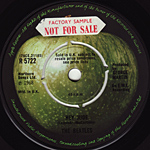 Dark Green Apple Label |
|
|
| Released: 30 August 1968 (UK), 26 August 1968 (US) | |||
 |
Hey Jude |
||
| Written by:
Lennon-McCartney Recorded: 29-31 July, 1 August 1968 Producer: George Martin Engineers: Ken Scott, Barry Sheffield |
Paul McCartney:
vocals, piano, bass John Lennon: backing vocals, acoustic guitar George Harrison: backing vocals, electric guitar Ringo Starr: backing vocals, drums, tambourine Uncredited: 10 violins, 3 violas, 3 cellos, 2 double basses, 2 flutes, 2 clarinets, 1 bass clarinet, 1 bassoon, 1 contrabassoon, 4 trumpets, 2 horns, 4 trombones, 1 percussion |
||
| Revolution |
|||
| Written by:
Lennon-McCartney Recorded: 9-12 July 1968 Producer: George Martin Engineer: Geoff Emerick |
John Lennon:
vocals,
electric guitar, handclaps Paul McCartney: bass guitar, Hammond organ, handclaps George Harrison: electric guitar, handclaps Ringo Starr: drums, handclaps Nicky Hopkins: electric piano |
||
The Beatles second - and final - UK single of 1968 was an all-time classic. Hey Jude, with Revolution on the b-side, was also the group's first on their Apple label. The single was issued as Apple R 5722, although the catalogue number followed Parlophone's convention, and the rights remained with the EMI subsidiary. Hey Jude spent 16 weeks on the UK charts from 7 September. It spent two weeks at number one from 11 September, before being knocked off by Mary Hopkin's Those Were The Days, produced by Paul McCartney and released on this day as Apple 2. At seven minutes and 11 seconds, Hey Jude was the UK's longest number one single until 1993. Its success encouraged artists and radio stations alike to throw out the unwritten rule that singles should be no longer than three minutes. The b-side to Hey Jude, Revolution was John Lennon's response to the popular calls for uprising in the US and Europe, and a revision of the version already recorded for the White Album. Although taped after Revolution 1, this faster, louder version was the first to be released. The song was written in India while The Beatles were studying meditation in Rishikesh. (from "The Beatles Bible") |
|||
|
TRACK LISTING
|
SIDE 1 | Hey Jude (Lennon-McCartney) | |||
| SIDE 2 | Revolution (Lennon-McCartney) | ||||
|
RELEASE DATE
|
Factory Sample (First Press: 30th August. 1968) | ||||
| SLEEVE: FRONT | SLEEVE: BACK | SIDE 1 --> Click! | SIDE 2 --> Click! | DISK --> Click! | |
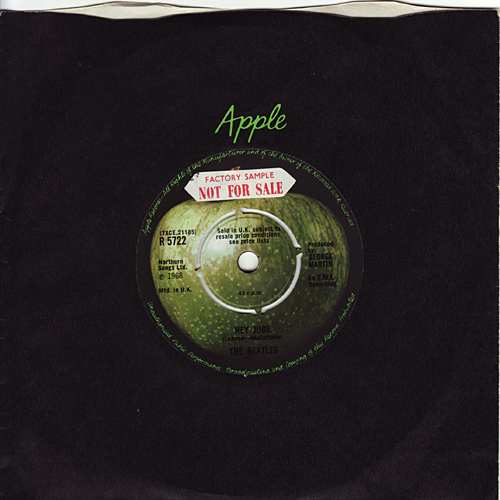 |
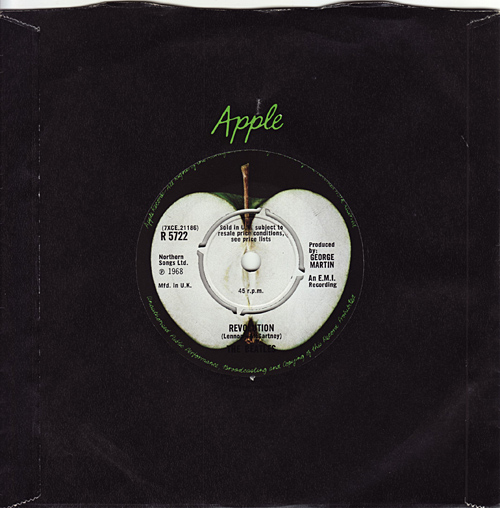 |
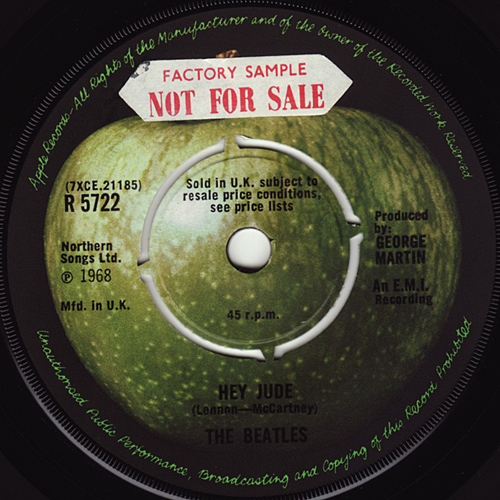 |
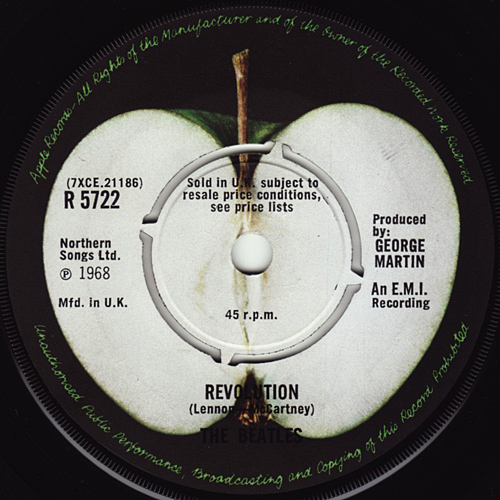 |
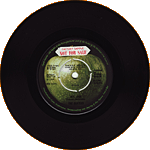 |
|
| LABEL CLOSE UP | |||||
 |
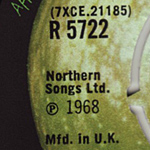 |
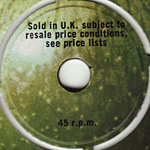 |
The
"(P)-1968" statement was printed
at the left part of the label. With the push-out center and
has the
central remark "SOLD IN UK..." Tax code is "KJT" |
||
| "Apple Records - All Rights of the Manufacturer and of the Owner of the Recorded Work Reserved" was printed at the perimeter. | |||||
| LABEL CLOSE UP | |||||
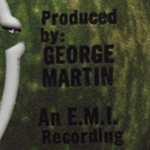 |
 |
 |
 |
||
| "Produced by: GEORGE MARTIN", "An E.M.I. Recording" credit were printed on the label. With a "FACTORY SAMPLE" sticker on the label of side-1. | SIDE 1 | SIDE 2 | |||
| Matrix
suffixed with "1" on both side. |
|||||
|
OTHER ITEM
|
|||||
|
-
|
|||||
|
CATALOG NUMBER
|
R 5722 | ||||
|
LABEL
|
Dark Green Apple | ||||
|
MIX
|
Mono | ||||
| MATRIX No. | SIDE 1 | 7XCE 21185 -1 | |||
| SIDE 2 | 7XCE 21186 -1 | ||||
|
VINYL COLOR
|
BLACK | ||||
|
RECORD COMPANY'S
NAME
|
Apple Records + An E.M.I. Recording | ||||
|
CENTER
|
Push-out center | ||||
|
CENTRAL REMARK
"SOLD IN U.K..." |
YES | ||||
|
PUBLISHER'S NAME
|
SIDE 1
|
Northern Songs Ltd. | |||
|
SIDE 2
|
Northern Songs Ltd. | ||||
|
PRODUCER
|
George Martin | ||||
|
COVER DESIGN/
PHOTO/
NOTES
|
Apple black sleeve
type-1A: Wave cut at top. glossy sleeve. Glued left and right. |
||||
|
COMMENTS
|
At the end of the
summer
of 1968, on 26th August, the Beatles issued their first
single on their
new label. "HEY JUDE" and all the future domestic U.K. Beatles singles, would bear a fine-looking green apple on the "A" side label, with the sliced-open half apple on the flip side. Instead of "THE GRAMOPHONE CO.LTD.", "Apple Records" was printed at the perimeter. The Apple singles also contained the notice "An E.M.I. Recording". No green & white demos of this 45 were produced so this early copy is on dark green Apple label: R 5722. A genuine "Factory Sample - Not For Sale" sticker is adhered to the side 1 label. All of the Beatles' five Apple singles were manufactured two ways: both with and without the push-out center. |
||||
|
TRACK LISTING
|
SIDE 1 | Hey Jude (Lennon-McCartney) | |||
| SIDE 2 | Revolution (Lennon-McCartney) | ||||
|
RELEASE DATE
|
30th August. 1968/First Press | ||||
| SLEEVE: FRONT | SLEEVE: BACK | SIDE 1 --> Click! | SIDE 2 --> Click! | DISK --> Click! | |
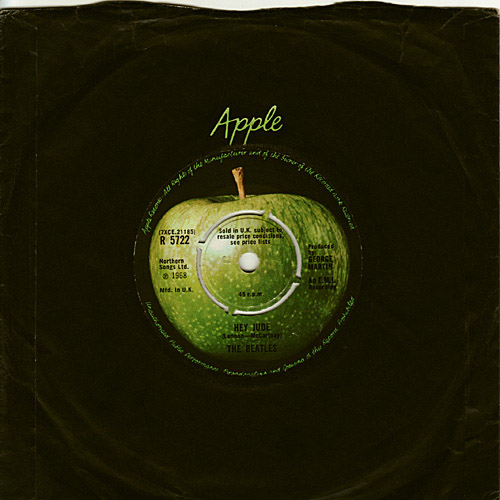 |
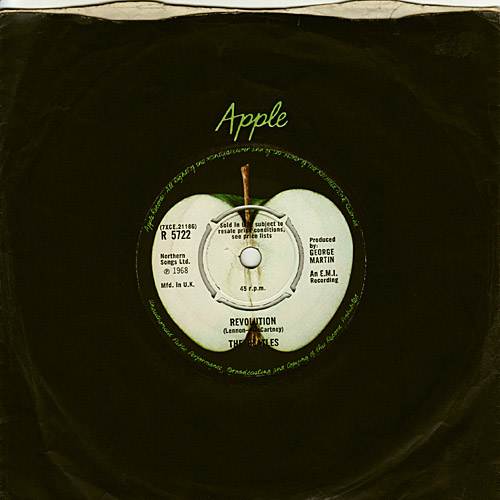 |
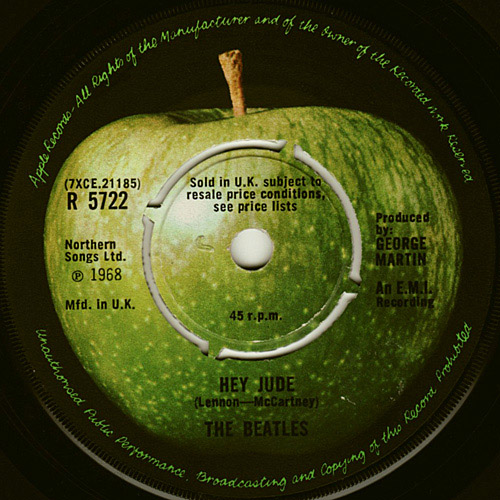 |
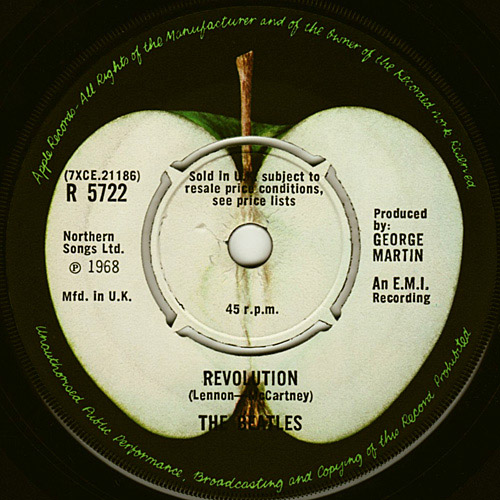 |
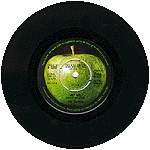 |
|
| LABEL CLOSE UP | |||||
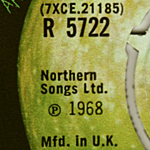 |
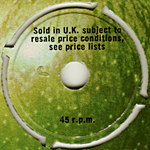 |
The "(P)-1968" statement was
printed
at the left part of the label. With the push-out center and has the central remark "SOLD IN UK..." |
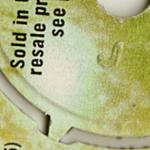 |
Tax code is "J" (maybe) | |
| LABEL CLOSE UP | |||||
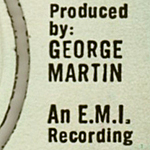 |
"Produced by: GEORGE MARTIN", "An E.M.I. Recording" credit were printed on the label. |  |
Matrix suffixed with "1" on both side. | ||
 |
|||||
|
OTHER ITEM
|
|||||
|
-
|
|||||
|
CATALOG NUMBER
|
R 5722 | ||||
|
LABEL
|
Dark Green Apple | ||||
|
MIX
|
Mono | ||||
| MATRIX No. | SIDE 1 | 7XCE 21185 -1 | |||
| SIDE 2 | 7XCE 21186 -1 | ||||
|
VINYL COLOR
|
BLACK | ||||
|
RECORD COMPANY'S
NAME
|
Apple Records + An E.M.I. Recording | ||||
|
CENTER
|
Push-out center | ||||
|
CENTRAL REMARK
"SOLD IN U.K..." |
YES | ||||
|
PUBLISHER'S NAME
|
SIDE 1
|
Northern Songs Ltd. | |||
|
SIDE 2
|
Northern Songs Ltd. | ||||
|
PRODUCER
|
George Martin | ||||
|
COVER DESIGN/
PHOTO/
NOTES
|
Apple black sleeve
type-1A: Wave cut at top. glossy sleeve. Glued left and right. |
||||
|
COMMENTS
|
At the end of the
summer
of 1968, on 26th August, the Beatles issued their first
single on their
new label. "HEY JUDE" and all the future domestic U.K. Beatles singles, would bear a fine-looking green apple on the "A" side label, with the sliced-open half apple on the flip side. Instead of "THE GRAMOPHONE CO.LTD.", "Apple Records" was printed at the perimeter. The Apple singles also contained the notice "An E.M.I. Recording". All of the Beatles' five Apple singles were manufactured two ways: both with and without the push-out center. |
||||
|
TRACK LISTING
|
SIDE 1 | Hey Jude (Lennon-McCartney) | |||
| SIDE 2 | Revolution (Lennon-McCartney) | ||||
|
RELEASE DATE
|
30th August. 1968/First Press | ||||
| SLEEVE: FRONT | SLEEVE: BACK | SIDE 1 --> Click! | SIDE 2 --> Click! | DISK --> Click! | |
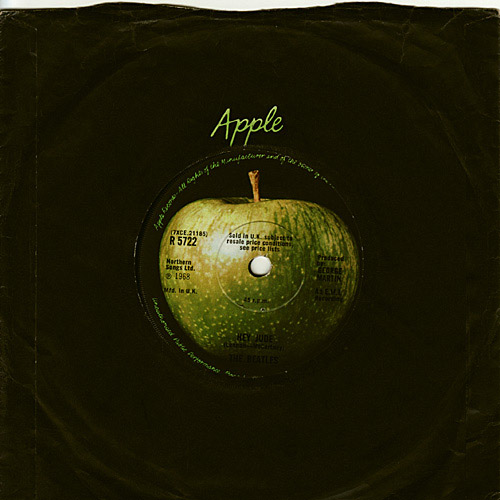 |
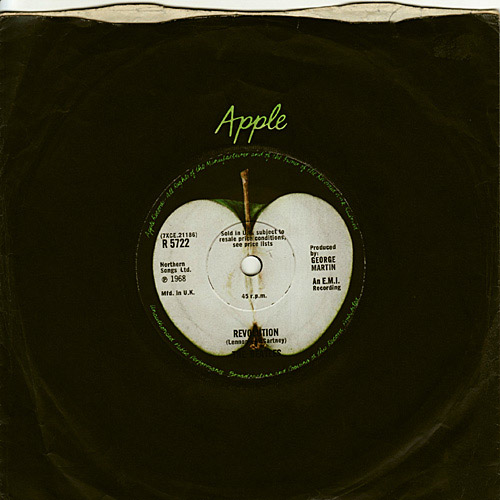 |
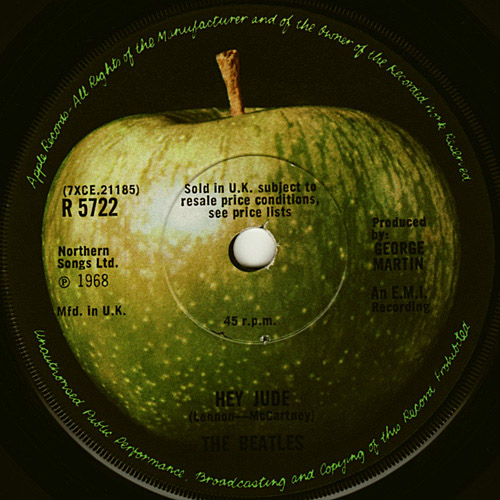 |
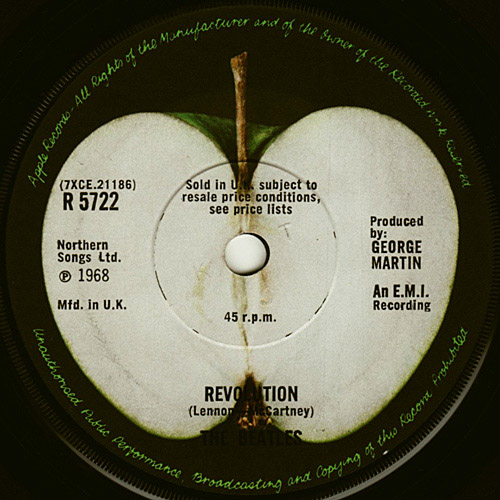 |
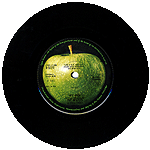 |
|
| LABEL CLOSE UP | |||||
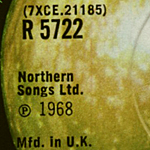 |
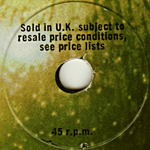 |
The "(P)-1968" statement was
printed
at the left part of the label. Solid center and has the central remark "SOLD IN UK..." |
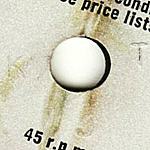 |
Tax code is "K, J, T" | |
| LABEL CLOSE UP | |||||
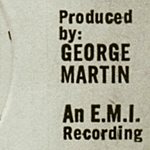 |
"Produced by: GEORGE MARTIN", "An E.M.I. Recording" credit were printed on the label. |  |
Matrix suffixed with "1" on both side. | ||
 |
|||||
|
OTHER ITEM
|
|||||
|
-
|
|||||
|
CATALOG NUMBER
|
R 5722 | ||||
|
LABEL
|
Dark Green Apple | ||||
|
MIX
|
Mono | ||||
| MATRIX No. | SIDE 1 | 7XCE 21185 -1 | |||
| SIDE 2 | 7XCE 21186 -1 | ||||
|
VINYL COLOR
|
BLACK | ||||
|
RECORD COMPANY'S
NAME
|
Apple Records + An E.M.I. Recording | ||||
|
CENTER
|
Solid center | ||||
|
CENTRAL REMARK
"SOLD IN U.K..." |
YES | ||||
|
PUBLISHER'S NAME
|
SIDE 1
|
Northern Songs Ltd. | |||
|
SIDE 2
|
Northern Songs Ltd. | ||||
|
PRODUCER
|
George Martin | ||||
|
COVER DESIGN/
PHOTO/
NOTES
|
Apple black sleeve
type-1A: Wave cut at top. glossy sleeve. Glued left and right. |
||||
|
COMMENTS
|
At the end of the
summer
of 1968, on 26th August, the Beatles issued their first
single on their
new label. "HEY JUDE" and all the future domestic U.K. Beatles singles, would bear a fine-looking green apple on the "A" side label, with the sliced-open half apple on the flip side. Instead of "THE GRAMOPHONE CO.LTD.", "Apple Records" was printed at the perimeter. The Apple singles also contained the notice "An E.M.I. Recording". All of the Beatles' five Apple singles were manufactured two ways: both with and without the push-out center. |
||||
|
TRACK LISTING
|
SIDE 1 | Hey Jude (Lennon-McCartney) | |||
| SIDE 2 | Revolution (Lennon-McCartney) | ||||
|
RELEASE DATE
|
1968/Pye Contract Press | ||||
| SLEEVE: FRONT | SLEEVE: BACK | SIDE 1 --> Click! | SIDE 2 --> Click! | DISK --> Click! | |
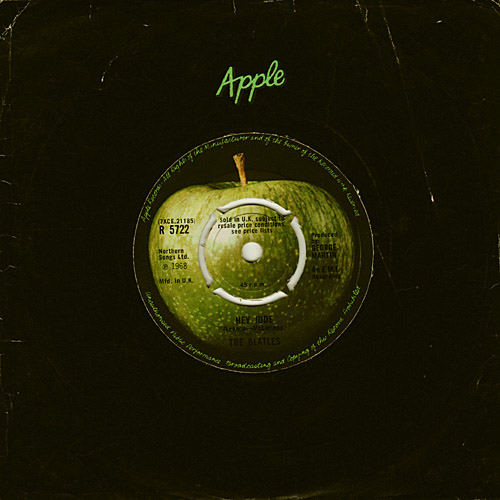 |
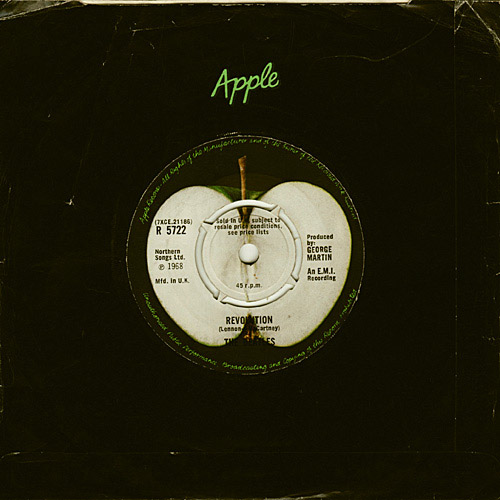 |
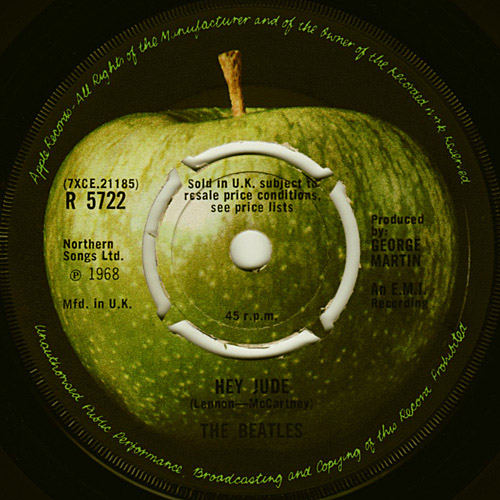 |
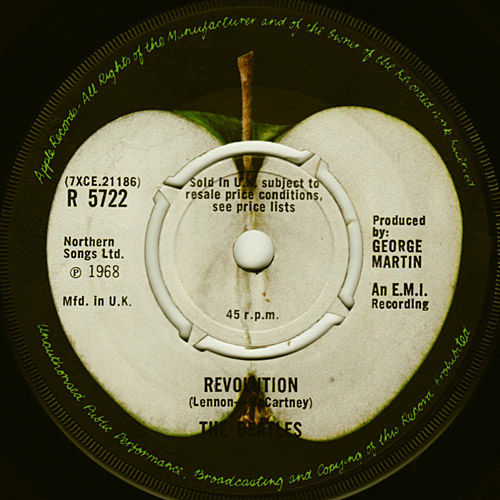 |
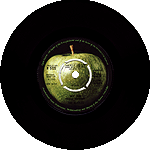 |
|
| LABEL CLOSE UP | |||||
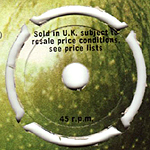 |
Pye "Push-out Center"Contract
Pressing:
(According to "TheBeatlesCollection") 1: There is no tax code around the center hole on either side of the disk. 2: The ridge is approximately 2.5mm in from the edge of the push-out center or approximately 10mm out from the center hole. 3: The secondary ridge runs right on the very edge next to the triangular center attachments. You can only see a second ridge at the base of these triangular shapes and extremely flush against the edge gap, whereas on the Decca disks this ridge is clearly visible around the extreme edge rim of the pushout section. This is consistent with all Decca and Pye disks. 4: The gap between the push-out center and the main body of the disk is approximately 2.25mm. |
||||
| LABEL CLOSE UP | |||||
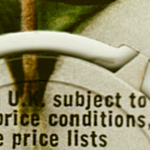 |
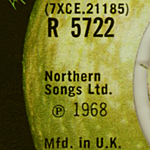 |
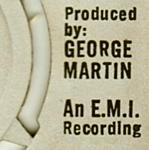 |
 |
Matrix suffixed with "1" on both side. | |
 |
|||||
|
OTHER ITEM
|
|||||
| - | |||||
|
CATALOG NUMBER
|
R 5722 | ||||
|
LABEL
|
Dark Green Apple | ||||
|
MIX
|
Mono | ||||
| MATRIX No. | SIDE 1 | 7XCE 21185 -1 | |||
| SIDE 2 | 7XCE 21186 -1 | ||||
|
VINYL COLOR
|
BLACK | ||||
|
RECORD COMPANY'S
NAME
|
Apple Records + An E.M.I. Recording | ||||
|
CENTER
|
Push-out Center: Pye contract pressing | ||||
|
CENTRAL REMARK
"SOLD IN U.K..." |
YES | ||||
|
PUBLISHER'S NAME
|
SIDE 1
|
Northern Songs Ltd. | |||
|
SIDE 2
|
Northern Songs Ltd. | ||||
|
PRODUCER
|
George Martin | ||||
|
COVER DESIGN/
PHOTO/
NOTES
|
Apple black sleeve
type-1B: Tab cut at top. glossy sleeve. Glued bottom and right. |
||||
|
COMMENTS
|
Back in the 60's EMI
had
a limited record pressing power, and the Beatles were so
popular that
they simply could not cope with the demand that the fans
were putting
on them to get the copies out and into the shops. Purchases
meant
profit, and fans having to wait for EMI to catch up with
demand meant a
loss of earnings. Because of this, EMI decided to approach
rival
production companies with batch orders for them to press to
help keep
on top of things. The Pye contract press is much more difficult to find than was once thought. in fact it appears that Pye only ever helped EMI out once and that was for the single Hey Jude. It has been said that EMI had to ask some other company (ex. Pye, Philips, CBS and Decca) to press this single. (According to "TheBeatlesCollection") The pye contract pressings were manufactured two ways: both with and without the push-out center. |
||||
|
TRACK LISTING
|
SIDE 1 | Hey Jude (Lennon-McCartney) | |||
| SIDE 2 | Revolution (Lennon-McCartney) | ||||
|
RELEASE DATE
|
1968/Pye Contract Press | ||||
| SLEEVE: FRONT | SLEEVE: BACK | SIDE 1 --> Click! | SIDE 2 --> Click! | DISK --> Click! | |
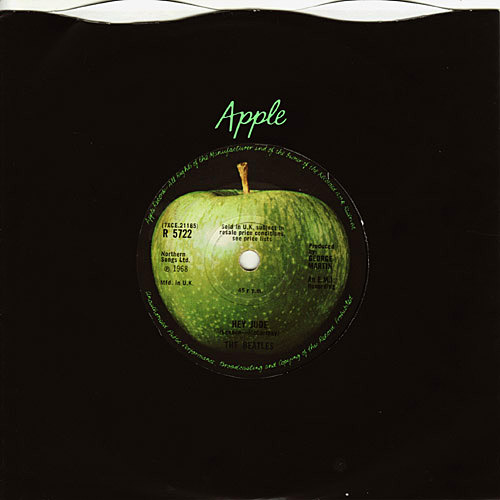 |
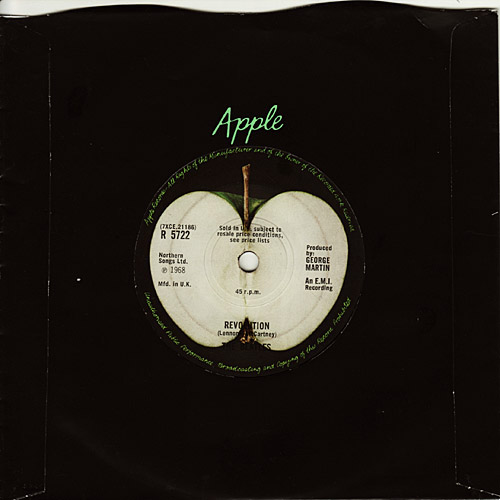 |
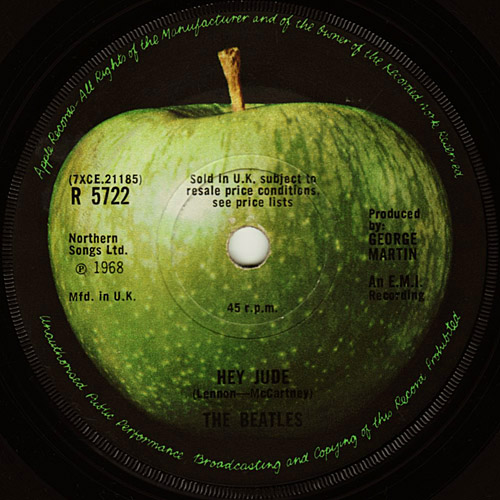 |
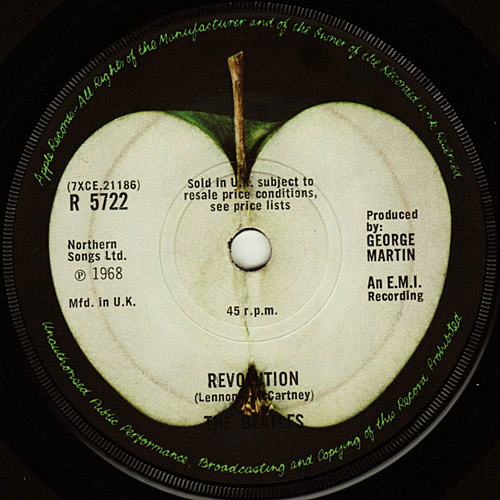 |
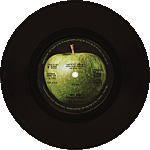 |
|
| LABEL CLOSE UP | |||||
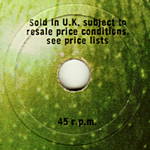 |
Pye "Solid Center" Contract
Pressing:
(According to "TheBeatlesCollection") 1: There is no tax code around the center hole on either side of the disc. 2: The first, inner ridge is approximately 10mm out from the center hole. 3: The second, outer ridge is approximately 2.5mm out from the inner ridge and 12.5mm out from the center hole. It is 26mm in from the edge of the label. 4: A third smoother embankment-like ridge surrounds the outer ridge and is approximately 2mm out from the outer ridge and 14.5mm out from the center hole. It is 24mm in from the edge of the label. 5: A hand-etched letter has been scratched in at the 3 o'clock position. This does NOT appear on the Decca contract pressings. |
||||
| LABEL CLOSE UP | |||||
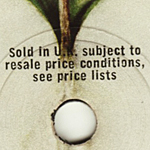 |
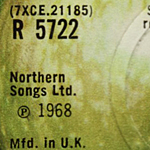 |
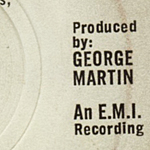 |
 |
Matrix suffixed with "1" on both side. | |
 |
|||||
|
OTHER ITEM
|
|||||
| - | |||||
|
CATALOG NUMBER
|
R 5722 | ||||
|
LABEL
|
Dark Green Apple | ||||
|
MIX
|
Mono | ||||
| MATRIX No. | SIDE 1 | 7XCE 21185 -1 | |||
| SIDE 2 | 7XCE 21186 -1 | ||||
|
VINYL COLOR
|
BLACK | ||||
|
RECORD COMPANY'S
NAME
|
Apple Records + An E.M.I. Recording | ||||
|
CENTER
|
Solid Center: Pye contract pressing | ||||
|
CENTRAL REMARK
"SOLD IN U.K..." |
YES | ||||
|
PUBLISHER'S NAME
|
SIDE 1
|
Northern Songs Ltd. | |||
|
SIDE 2
|
Northern Songs Ltd. | ||||
|
PRODUCER
|
George Martin | ||||
|
COVER DESIGN/
PHOTO/
NOTES
|
Apple black sleeve
type-1A: Wave cut at top. glossy sleeve. Glued left and right. |
||||
|
COMMENTS
|
Back in the 60's EMI
had
a limited record pressing power, and the Beatles were so
popular that
they simply could not cope with the demand that the fans
were putting
on them to get the copies out and into the shops. Purchases
meant
profit, and fans having to wait for EMI to catch up with
demand meant a
loss of earnings. Because of this, EMI decided to approach
rival
production companies with batch orders for them to press to
help keep
on top of things. The Pye contract press is much more difficult to find than was once thought. It has been said that EMI had to ask some other company (ex. Pye, Philips, CBS and Decca) to press this single. (According to "TheBeatlesCollection") The pye contract pressings were manufactured two ways: both with and without the push-out center. |
||||
|
TRACK LISTING
|
SIDE 1 | Hey Jude (Lennon-McCartney) | |||
| SIDE 2 | Revolution (Lennon-McCartney) | ||||
|
RELEASE DATE
|
1968/Philips Contract Press | ||||
| SLEEVE: FRONT | SLEEVE: BACK | SIDE 1 --> Click! | SIDE 2 --> Click! | DISK --> Click! | |
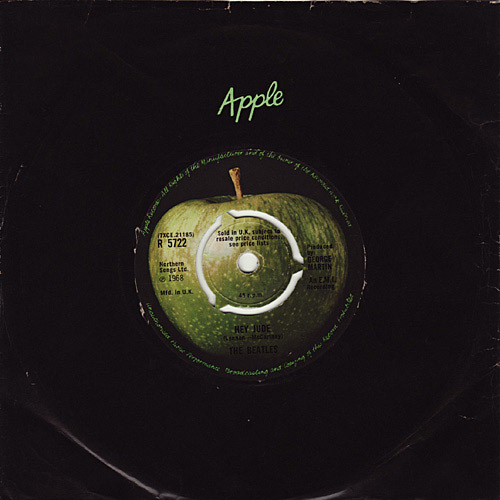 |
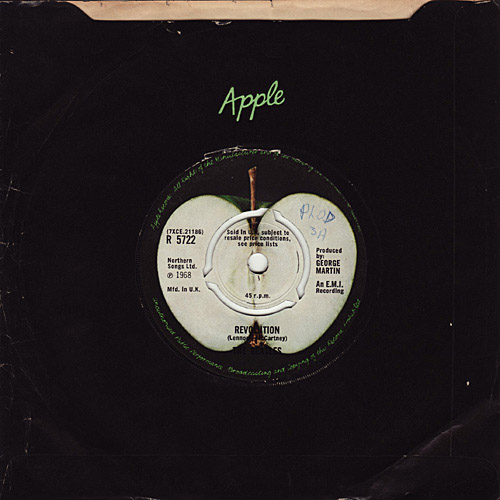 |
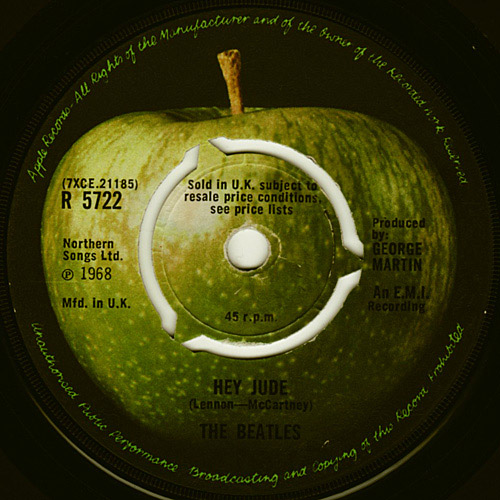 |
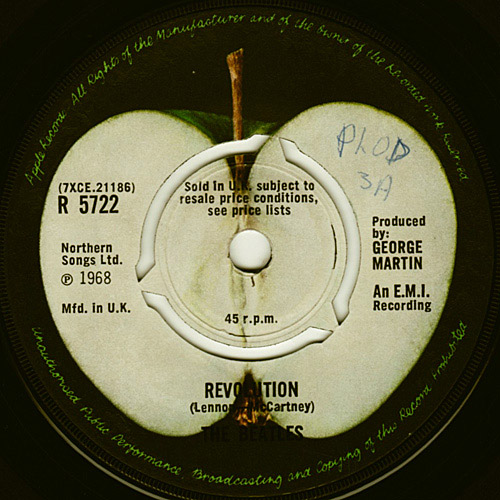 |
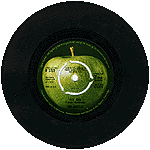 |
|
| LABEL CLOSE UP | |||||
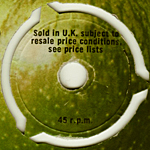 |
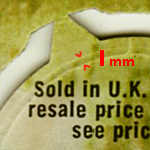 |
The Philips c are unique in the
fact
that they have a 3-pronged push-out center rather than the
standard 4
that the other pressing plants adopted. Philips contract pressing, these are its distinguishing characteristics. 1: There is no tax code on the push-out center either side of the disk. 2: There is a double ridge (1mm apart) that runs around approximately 1mm in from the edge of the pushout center. It's 11mm out from the center hole and approximately 28mm in from the edge of the label. 3: The gap between the push-out centre and the body of the disk is approximately 2.5mm. (According to "TheBeatlesCollection") |
|||
| LABEL CLOSE UP | |||||
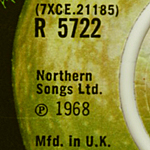 |
Has
the
central remark "SOLD IN UK..." and "(P)-1968" statement were printed on the label. |
 |
Matrix suffixed with "1" on both side. | ||
 |
|||||
|
OTHER ITEM
|
|||||
| - | |||||
|
CATALOG NUMBER
|
R 5722 | ||||
|
LABEL
|
Dark Green Apple | ||||
|
MIX
|
Mono | ||||
| MATRIX No. | SIDE 1 | 7XCE 21185 -1 | |||
| SIDE 2 | 7XCE 21186 -1 | ||||
|
VINYL COLOR
|
BLACK | ||||
|
RECORD COMPANY'S
NAME
|
Apple Records + An E.M.I. Recording | ||||
|
CENTER
|
Push-out Center: Phillips contract pressing, with 3-pronged. | ||||
|
CENTRAL REMARK
"SOLD IN U.K..." |
YES | ||||
|
PUBLISHER'S NAME
|
SIDE 1
|
Northern Songs Ltd. | |||
|
SIDE 2
|
Northern Songs Ltd. | ||||
|
PRODUCER
|
George Martin | ||||
|
COVER DESIGN/
PHOTO/
NOTES
|
Apple black sleeve
type-1B: Tab cut at top. glossy sleeve. Glued bottom and right. |
||||
|
COMMENTS
|
Back in the 60's EMI
had
a limited record pressing power, and the Beatles were so
popular that
they simply could not cope with the demand that the fans
were putting
on them to get the copies out and into the shops. Purchases
meant
profit, and fans having to wait for EMI to catch up with
demand meant a
loss of earnings. Because of this, EMI decided to approach
rival
production companies with batch orders for them to press to
help keep
on top of things. Some copies at the original time were pressed by Philips Records (along with its subsidiary Mercury and their subsidiary Fontana) to assist EMI who could not keep up with the demand for this Beatles release. EMI sub-contracted Philips to run off a small batch at their Pressing Plant. There is a distinct difference between the routine EMI pressing of Hey Jude and the slightly rarer Philips contract pressing. The Philips version displays 3- prongs with a wider gap in the middle. |
||||
|
TRACK LISTING
|
SIDE 1 | Hey Jude (Lennon-McCartney) | |||
| SIDE 2 | Revolution (Lennon-McCartney) | ||||
|
RELEASE DATE
|
1968/CBS Contract Press | ||||
| SLEEVE: FRONT | SLEEVE: BACK | SIDE 1 --> Click! | SIDE 2 --> Click! | DISK --> Click! | |
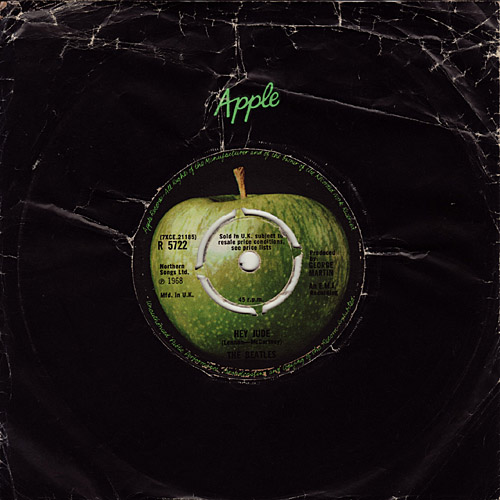 |
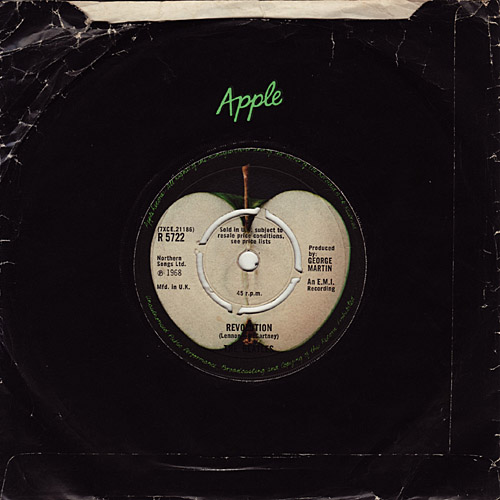 |
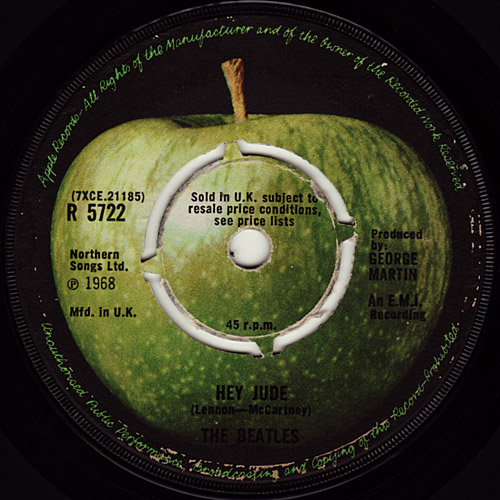 |
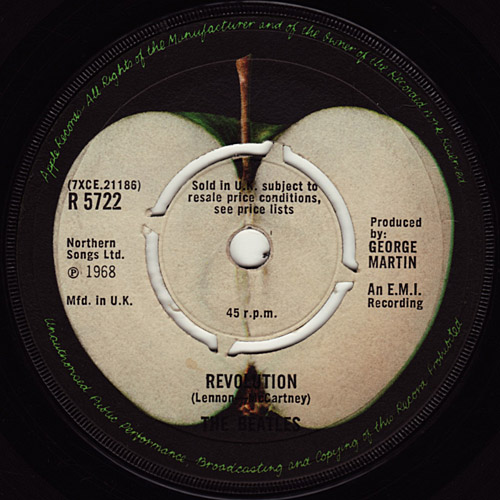 |
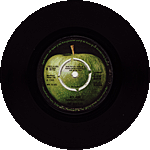 |
|
| LABEL CLOSE UP | |||||
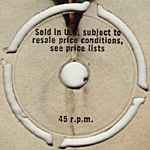 |
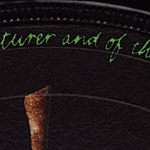 |
CBS
Contract
Pressing:
(According to "TheBeatlesCollection") 1:The ridge is approximately 12.5mm out from the center hole. 2:The gap between the push-out center and the body of the disk is approximately 2.5mm. 3:There is an outer ring on the very edge of the label (which, as a whole, is textured) that runs from the edge to just 2-3mm in. This is the only smooth part of the label. This outer ring has been highlighted in the close-up underneath. Note the slightly larger space between the centerpiece and the rest of the label compared to the EMI pressing. The single has a "knife" edge. This label is not as glossy as the EMI and it is slightly textured. |
|||
| LABEL CLOSE UP | |||||
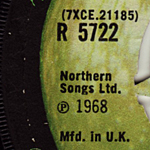 |
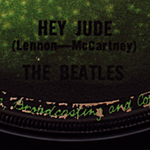 |
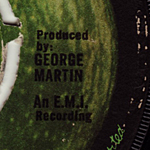 |
 |
 |
|
| SIDE 1 | SIDE 2 | ||||
| Matrix suffixed with "1" on both side. | |||||
|
OTHER ITEM
|
|||||
| - | |||||
|
CATALOG NUMBER
|
R 5722 | ||||
|
LABEL
|
Dark Green Apple | ||||
|
MIX
|
Mono | ||||
| MATRIX No. | SIDE 1 | 7XCE 21185 -1 | |||
| SIDE 2 | 7XCE 21186 -1 | ||||
|
VINYL COLOR
|
BLACK | ||||
|
RECORD COMPANY'S
NAME
|
Apple Records + An E.M.I. Recording | ||||
|
CENTER
|
Push-out Center: CBS contract pressing | ||||
|
CENTRAL REMARK
"SOLD IN U.K..." |
YES | ||||
|
PUBLISHER'S NAME
|
SIDE 1
|
Northern Songs Ltd. | |||
|
SIDE 2
|
Northern Songs Ltd. | ||||
|
PRODUCER
|
George Martin | ||||
|
COVER DESIGN/
PHOTO/
NOTES
|
Apple black sleeve
type-1B: Tab cut at top. glossy sleeve. Glued bottom and right. |
||||
|
COMMENTS
|
It is currently
believed
that CBS were
another company
that only ever helped EMI out once with the production of a
Beatles
single. Instead of just having a textured center whilst the
rest of the
label is smooth the whole label on the CBS
contract pressing has a rough texture to it and is
only smooth
around the very edge of the label (to just 2mm in). late 60s, earlier AAG CBS were made by PHILIPS group. UK CBS bought Oriole in late 1964 to get their pressing plant mainly, so CBS from 1966 still look pretty like Orioles. CBS generally did not do many contract pressings in the 60s. They can have textured or smooth labels. Knife edge vinyl, squashed looking serrated label edge. CBS mainly used push out centers, but by the later 60s solid centers were often used on bigger selling items, as with EMI. The CBS contract pressings were manufactured two ways: both with and without the push-out center. cf. The company started life as the Columbia Phonograph Co. in 1887. It flourished for more than three decades, and set up branches in several other countries. In 1923, however, it hit financial troubles and went into receivership. The British subsidiary was sold as Columbia, later a part of EMI. In the USA, Columbia ended up in the possession of William S. Paley, founder of Columbia Broadcasting Systems. EMI had the rights to the name Columbia in the UK. From 1965, CBS flourished as a major manufacturer and distributor of records. Issuing thousands of singles on its own CBS label it was also home to a number of other successful labels. The Oriole Record Company lasted until September 21, 1964, when it was bought, lock, stock and plant, by CBS Inc., who were looking to set up their own manufacturing facility in the UK. The result was CBS Records, and with its coming the Oriole label disappeared forever. |
||||
|
TRACK LISTING
|
SIDE 1 | Hey Jude (Lennon-McCartney) | |||
| SIDE 2 | Revolution (Lennon-McCartney) | ||||
|
RELEASE DATE
|
1968/CBS Contract Press | ||||
| SLEEVE: FRONT | SLEEVE: BACK | SIDE 1 --> Click! | SIDE 2 --> Click! | DISK --> Click! | |
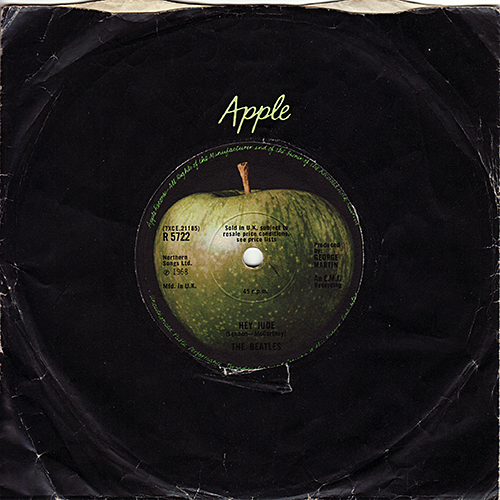 |
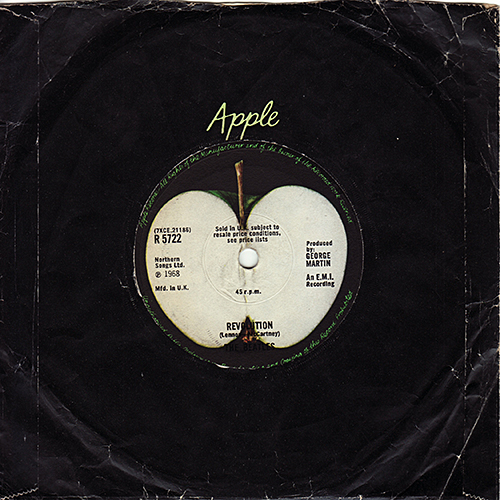 |
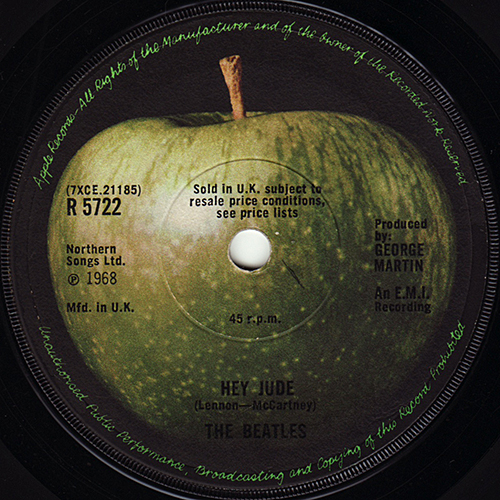 |
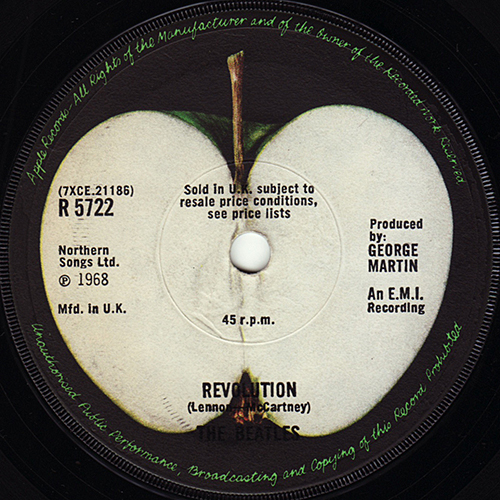 |
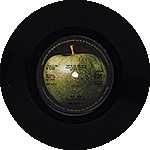 |
|
| LABEL CLOSE UP | |||||
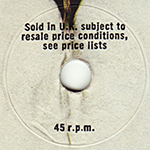 |
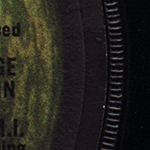 |
CBS
Contract
Pressing:
(According to "TheBeatlesCollection") 1:The ridge is approximately 12.5mm out from the center hole. 2:The gap between the push-out center and the body of the disk is approximately 2.5mm. 3:There is an outer ring on the very edge of the label (which, as a whole, is textured) that runs from the edge to just 2-3mm in. This is the only smooth part of the label. This outer ring has been highlighted in the close-up underneath. Note the slightly larger space between the centerpiece and the rest of the label compared to the EMI pressing. The single has a "knife" edge. This label is not as glossy as the EMI and it is slightly textured. |
|||
| LABEL CLOSE UP | |||||
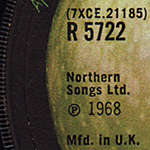 |
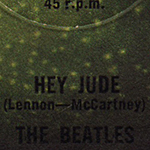 |
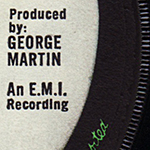 |
 |
 |
|
| SIDE 1 | SIDE 2 | ||||
| Matrix suffixed with "1" on both side. | |||||
|
OTHER ITEM
|
|||||
| - | |||||
|
CATALOG NUMBER
|
R 5722 | ||||
|
LABEL
|
Dark Green Apple | ||||
|
MIX
|
Mono | ||||
| MATRIX No. | SIDE 1 | 7XCE 21185 -1 | |||
| SIDE 2 | 7XCE 21186 -1 | ||||
|
VINYL COLOR
|
BLACK | ||||
|
RECORD COMPANY'S
NAME
|
Apple Records + An E.M.I. Recording | ||||
|
CENTER
|
Solid Center: CBS contract pressing | ||||
|
CENTRAL REMARK
"SOLD IN U.K..." |
YES | ||||
|
PUBLISHER'S NAME
|
SIDE 1
|
Northern Songs Ltd. | |||
|
SIDE 2
|
Northern Songs Ltd. | ||||
|
PRODUCER
|
George Martin | ||||
|
COVER DESIGN/
PHOTO/
NOTES
|
Apple black sleeve
type-1A: Wave cut at top. glossy sleeve. Glued left and right. |
||||
|
COMMENTS
|
It is currently
believed
that CBS were
another company
that only ever helped EMI out once with the production of a
Beatles
single. Instead of just having a textured center whilst the
rest of the
label is smooth the whole label on the CBS
contract pressing has a rough texture to it and is
only smooth
around the very edge of the label (to just 2mm in). late 60s, earlier AAG CBS were made by PHILIPS group. UK CBS bought Oriole in late 1964 to get their pressing plant mainly, so CBS from 1966 still look pretty like Orioles. CBS generally did not do many contract pressings in the 60s. They can have textured or smooth labels. Knife edge vinyl, squashed looking serrated label edge. CBS mainly used push out centers, but by the later 60s solid centers were often used on bigger selling items, as with EMI. The CBS contract pressings were manufactured two ways: both with and without the push-out center. cf. The company started life as the Columbia Phonograph Co. in 1887. It flourished for more than three decades, and set up branches in several other countries. In 1923, however, it hit financial troubles and went into receivership. The British subsidiary was sold as Columbia, later a part of EMI. In the USA, Columbia ended up in the possession of William S. Paley, founder of Columbia Broadcasting Systems. EMI had the rights to the name Columbia in the UK. From 1965, CBS flourished as a major manufacturer and distributor of records. Issuing thousands of singles on its own CBS label it was also home to a number of other successful labels. The Oriole Record Company lasted until September 21, 1964, when it was bought, lock, stock and plant, by CBS Inc., who were looking to set up their own manufacturing facility in the UK. The result was CBS Records, and with its coming the Oriole label disappeared forever. |
||||
|
TRACK LISTING
|
SIDE 1 | Hey Jude (Lennon-McCartney) | |||
| SIDE 2 | Revolution (Lennon-McCartney) | ||||
|
RELEASE DATE
|
1968? / Unknown Press (EMI?) | ||||
| SLEEVE: FRONT | SLEEVE: BACK | SIDE 1 --> Click! | SIDE 2 --> Click! | DISK --> Click! | |
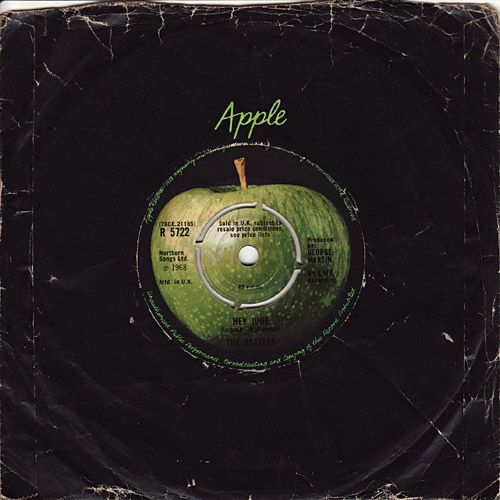 |
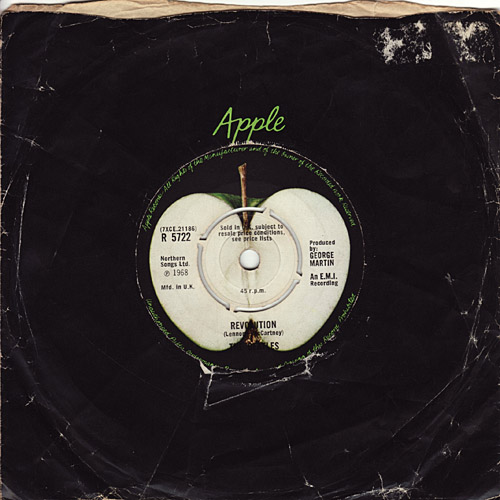 |
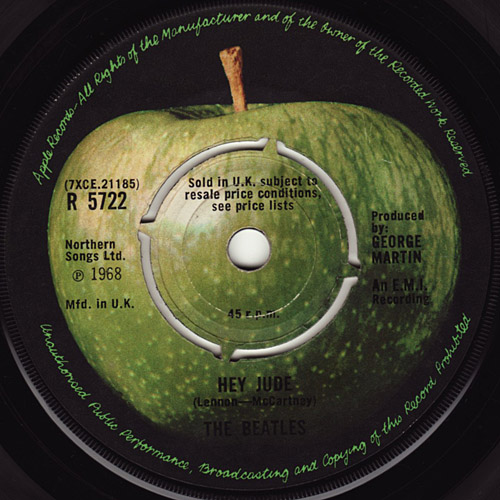 |
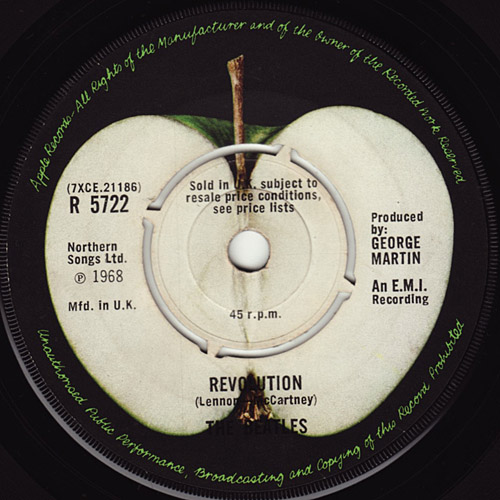 |
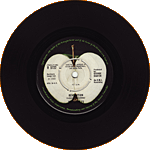 |
|
| LABEL CLOSE UP | |||||
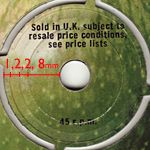 |
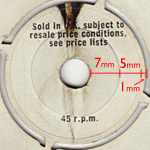 |
Unknown (EMI?) pressing,
these are
its distinguishing characteristics. 1: The tax code "KT" was pressed in the run-off groove area on both sides. 2: The ridge is approximately 7~8mm in from the center hole. 3: The ring is approximately 1mm in from the edge and 2mm out from the ridge on side-1. 4: The gap between the push-out center and the body of the disc is approximately 1.5mm. 5: Mother and stamper letters was found at the run-off groove area. |
|||
| LABEL CLOSE UP | |||||
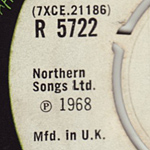 |
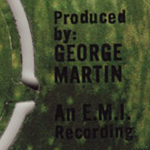 |
The
"(P) 1968" statement was printed
at the left part of the label. With the push-out center and has the central remark "SOLD IN UK..."statement. |
 |
 |
|
| SIDE 1 | SIDE 2 | ||||
| Matrix suffixed with "1" on both side. | |||||
|
OTHER ITEM
|
|||||
| - | |||||
|
CATALOG NUMBER
|
R 5722 | ||||
|
LABEL
|
Dark Green Apple | ||||
|
MIX
|
Mono | ||||
| MATRIX No. | SIDE 1 | 7XCE 21185 -1 | |||
| SIDE 2 | 7XCE 21186 -1 | ||||
|
VINYL COLOR
|
BLACK | ||||
|
RECORD COMPANY'S
NAME
|
Apple Records + An E.M.I. Recording | ||||
|
CENTER
|
Push-out Center: Unknown pressing (EMI?) | ||||
|
CENTRAL REMARK
"SOLD IN U.K..." |
YES | ||||
|
PUBLISHER'S NAME
|
SIDE 1
|
Northern Songs Ltd. | |||
|
SIDE 2
|
Northern Songs Ltd. | ||||
|
PRODUCER
|
George Martin | ||||
|
COVER DESIGN/
PHOTO/
NOTES
|
Apple black sleeve
type-1A: Wave cut at top. glossy sleeve. Glued left and right. |
||||
|
COMMENTS
|
This label is with
push-out
center type. With the push-out center and has the central remark "SOLD IN UK..."statement. The "(P)-1968" credit was printed at the left part of the label. Contract pressing? Unknown-original "Sold in U.K..." text label which has raised circular inner center both sides with raised inner rim. |
||||
|
TRACK LISTING
|
SIDE 1 | Hey Jude (Lennon-McCartney) | |||
| SIDE 2 | Revolution (Lennon-McCartney) | ||||
|
RELEASE DATE
|
1969? / Second Press? | ||||
| SLEEVE: FRONT | SLEEVE: BACK | SIDE 1 --> Click! | SIDE 2 --> Click! | DISK --> Click! | |
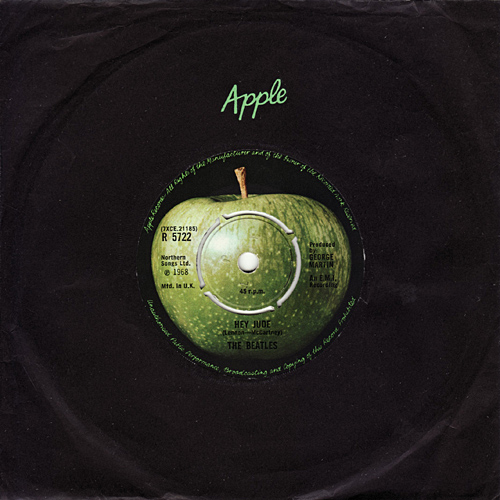 |
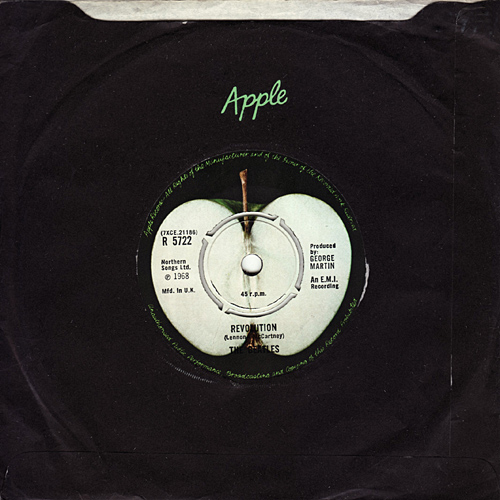 |
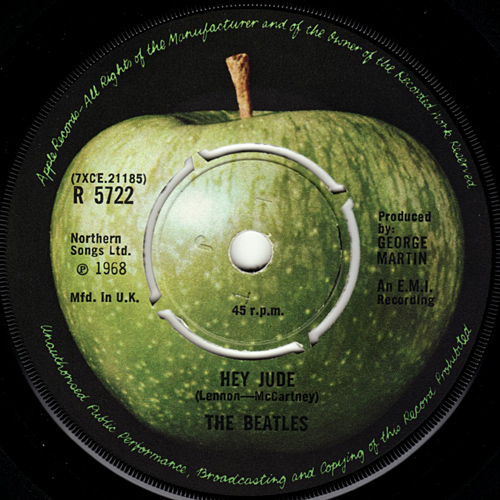 |
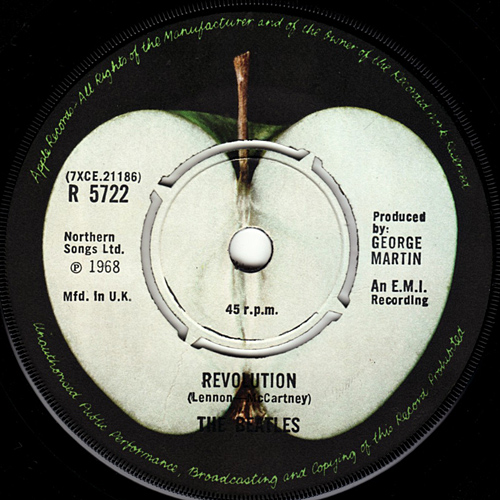 |
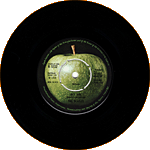 |
|
| LABEL CLOSE UP | |||||
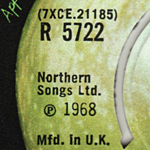 |
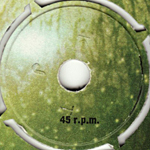 |
The "(P)-1968" statement was
printed
at the left part of the label. With the push-out center and
remove the central
remark "SOLD IN
UK..." Tax code is "KJT" |
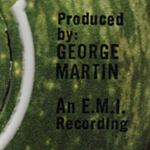 |
"Produced by: GEORGE MARTIN", "An E.M.I. Recording" credit were printed on the label. | |
| LABEL CLOSE UP | |||||
| SIDE 1 | SIDE 2 | Matrix
No. Side-1: 7XCE 21185 -1 Side-1: 7XCE 21186 -1 |
|||
 |
 |
||||
|
OTHER ITEM
|
|||||
| - | |||||
|
CATALOG NUMBER
|
R 5722 | ||||
|
LABEL
|
Dark Green Apple | ||||
|
MIX
|
Mono | ||||
| MATRIX No. | SIDE 1 | 7XCE 21185 -1 | |||
| SIDE 2 | 7XCE 21186 -1 | ||||
|
VINYL COLOR
|
BLACK | ||||
|
RECORD COMPANY'S
NAME
|
Apple Records + An E.M.I. Recording | ||||
|
CENTER
|
Push-out Center | ||||
|
CENTRAL REMARK
"SOLD IN U.K..." |
- | ||||
|
PUBLISHER'S NAME
|
SIDE 1
|
Northern Songs Ltd. | |||
|
SIDE 2
|
Northern Songs Ltd. | ||||
|
PRODUCER
|
George Martin | ||||
|
COVER DESIGN/
PHOTO/
NOTES
|
Apple black sleeve
type-1C: Tab cut at top. Matte sleeve. Glued bottom and right. |
||||
|
COMMENTS
|
This label is with
push-out
center type. The "Sold in U.K." text has gone from the label. Beginning in 1964, Parlophone (and all the other EMI companies) began printing a phrase in the centers of all their singles, EP's and LP's, which said: SOLD IN U.K. SUBJECT TO RESALE PRICE CONDITIONS, SEE PRICE LISTS. This notice appears on the labels of every UK market EMI product, from very early 1964, right through mid-1969. |
||||
|
TRACK LISTING
|
SIDE 1 | Hey Jude (Lennon-McCartney) | |||
| SIDE 2 | Revolution (Lennon-McCartney) | ||||
|
RELEASE DATE
|
1969? / Second Press? | ||||
| SLEEVE: FRONT | SLEEVE: BACK | SIDE 1 --> Click! | SIDE 2 --> Click! | DISK --> Click! | |
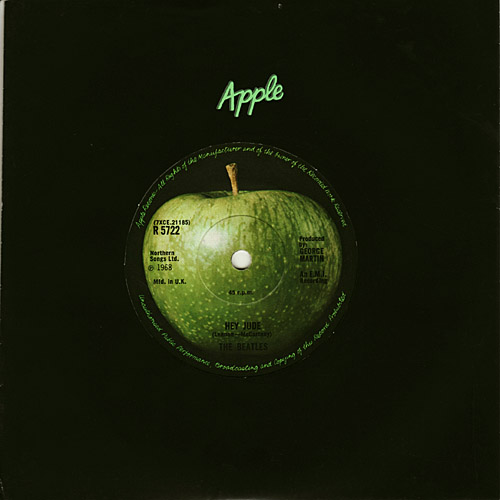 |
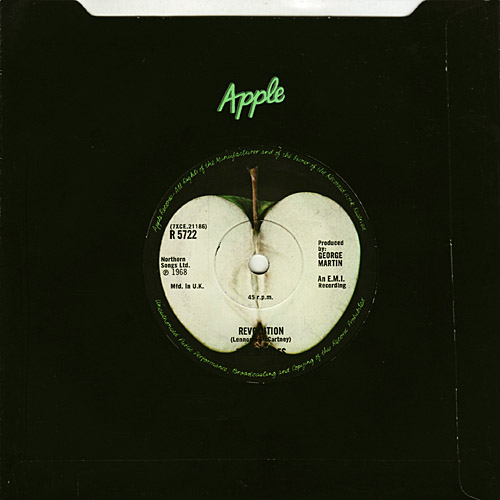 |
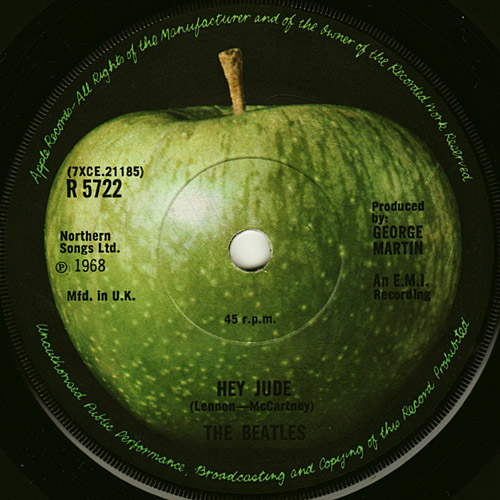 |
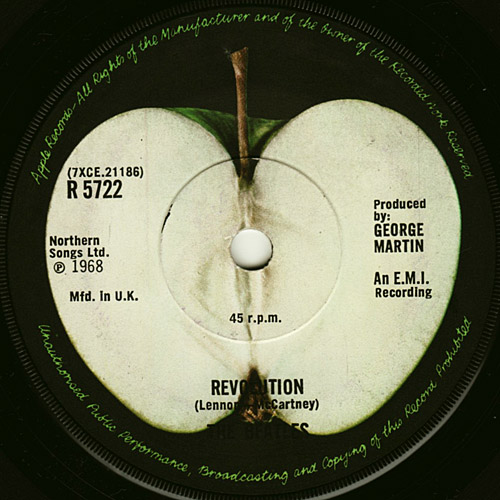 |
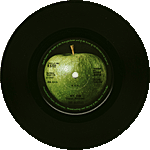 |
|
| LABEL CLOSE UP | |||||
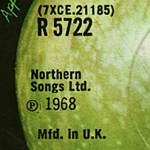 |
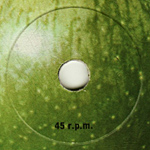 |
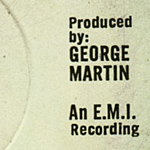 |
 |
 |
|
| SIDE 1 | SIDE 2 | ||||
| Matrix suffixed with "1" on both side. | |||||
|
OTHER ITEM
|
|||||
| - | |||||
|
CATALOG NUMBER
|
R 5722 | ||||
|
LABEL
|
Dark Green Apple | ||||
|
MIX
|
Mono | ||||
| MATRIX No. | SIDE 1 | 7XCE 21185 -1 | |||
| SIDE 2 | 7XCE 21186 -1 | ||||
|
VINYL COLOR
|
BLACK | ||||
|
RECORD COMPANY'S
NAME
|
Apple Records + An E.M.I. Recording | ||||
|
CENTER
|
Solid Center | ||||
|
CENTRAL REMARK
"SOLD IN U.K..." |
- | ||||
|
PUBLISHER'S NAME
|
SIDE 1
|
Northern Songs Ltd. | |||
|
SIDE 2
|
Northern Songs Ltd. | ||||
|
PRODUCER
|
George Martin | ||||
|
COVER DESIGN/
PHOTO/
NOTES
|
Apple black sleeve
type-1B: Tab cut at top. glossy sleeve. Glued bottom and right. |
||||
|
COMMENTS
|
This label is with
solid
center type. The "Sold in U.K." text has gone from the label. Beginning in 1964, Parlophone (and all the other EMI companies) began printing a phrase in the centers of all their singles, EP's and LP's, which said: SOLD IN U.K. SUBJECT TO RESALE PRICE CONDITIONS, SEE PRICE LISTS. This notice appears on the labels of every UK market EMI product, from very early 1964, right through mid-1969. |
||||
|
TRACK LISTING
|
SIDE 1 | Hey Jude (Lennon-McCartney) | |||
| SIDE 2 | Revolution (Lennon-McCartney) | ||||
|
RELEASE DATE
|
1970? / Third Press? | ||||
| SLEEVE: FRONT | SLEEVE: BACK | SIDE 1 --> Click! | SIDE 2 --> Click! | DISK --> Click! | |
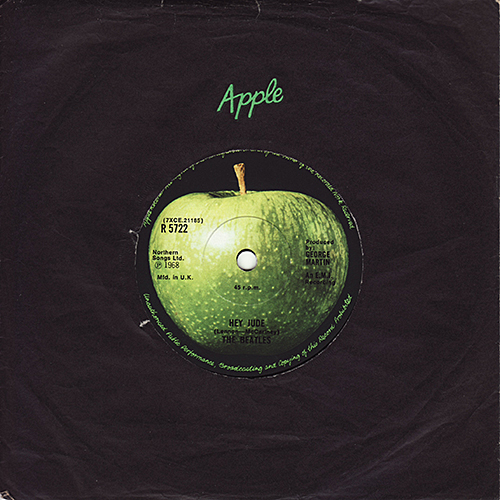 |
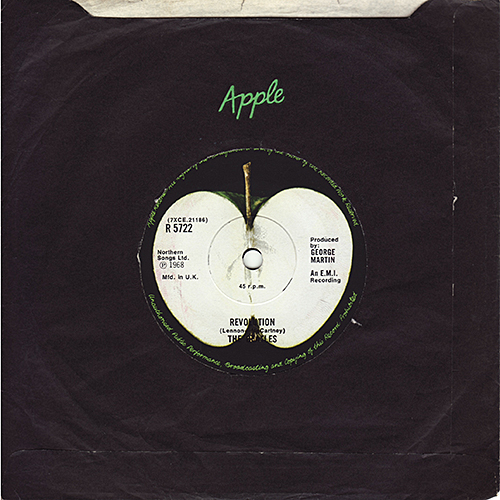 |
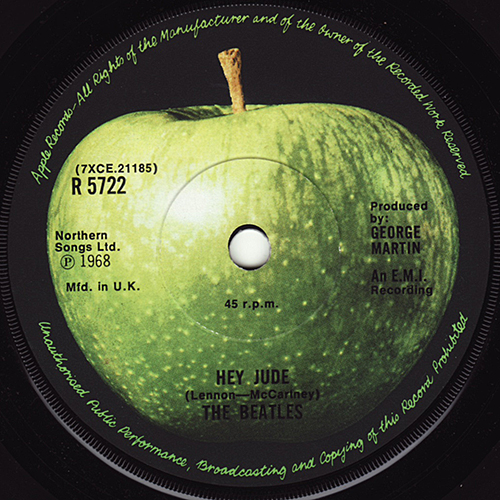 |
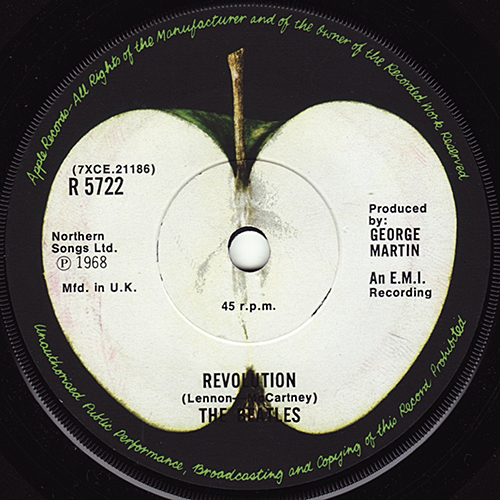 |
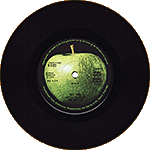 |
|
| LABEL CLOSE UP | |||||
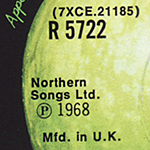 |
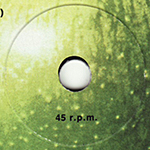 |
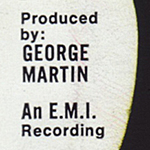 |
#18-14 (this
record) |
#18-12 | |
 |
 |
||||
| Mat green label
with publishing year printed with large copyright symbol
Ⓟ. Publisher's credit was different typeface from #18-13. |
|||||
| LABEL CLOSE UP | |||||
| SIDE 1 | SIDE 2 | Matrix
numbers:
Side 1: 7XCE.21185-1 Side 2: 7XCE.21186-1 |
|||
 |
 |
||||
|
OTHER ITEM
|
|||||
| - | |||||
|
CATALOG NUMBER
|
R 5722 | ||||
|
LABEL
|
Light (Mat) Green Apple | ||||
|
MIX
|
Mono | ||||
| MATRIX No. | SIDE 1 | 7XCE 21185 -1 | |||
| SIDE 2 | 7XCE 21186 -1 | ||||
|
VINYL COLOR
|
BLACK | ||||
|
RECORD COMPANY'S
NAME
|
Apple Records + An E.M.I. Recording | ||||
|
CENTER
|
Solid Center | ||||
|
CENTRAL REMARK
"SOLD IN U.K..." |
- | ||||
| RECORDING PUBLISHED CREDIT | With large
copyright symbol Ⓟ. Publisher's credit was different typeface from #18-13. |
||||
|
PUBLISHER'S NAME
|
SIDE 1
|
Northern Songs Ltd. | |||
|
SIDE 2
|
Northern Songs Ltd. | ||||
|
PRODUCER
|
George Martin | ||||
|
COVER DESIGN/
PHOTO/
NOTES
|
Apple black sleeve
type-1B: Tab cut at top. glossy sleeve. Glued bottom and right. |
||||
|
COMMENTS
|
This label is with
solid
center type. The "Sold in U.K." text has gone from the label. Beginning in 1964, Parlophone (and all the other EMI companies) began printing a phrase in the centers of all their singles, EP's and LP's, which said: SOLD IN U.K. SUBJECT TO RESALE PRICE CONDITIONS, SEE PRICE LISTS. This notice appears on the labels of every UK market EMI product, from very early 1964, right through mid-1969. Mat green label with publishing year printed with large copyright symbol Ⓟ. Publisher's credit was different typeface from #18-13. |
||||
|
TRACK LISTING
|
SIDE 1 | Hey Jude (Lennon-McCartney) | |||
| SIDE 2 | Revolution (Lennon-McCartney) | ||||
|
RELEASE DATE
|
1982? / For Jukeboxes ? | ||||
| SLEEVE: FRONT | SLEEVE: BACK | SIDE 1 --> Click! | SIDE 2 --> Click! | DISK --> Click! | |
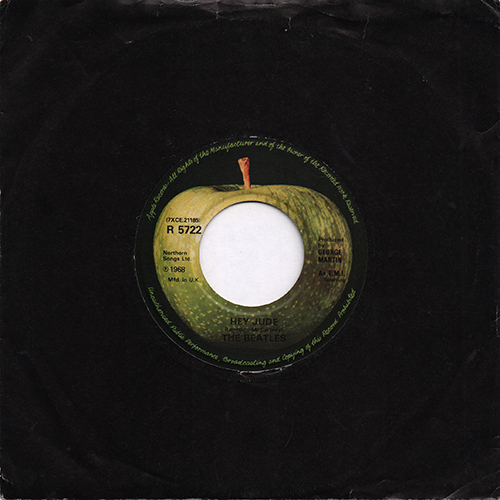 |
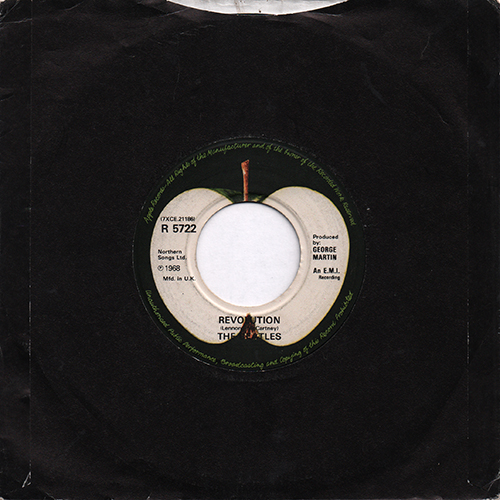 |
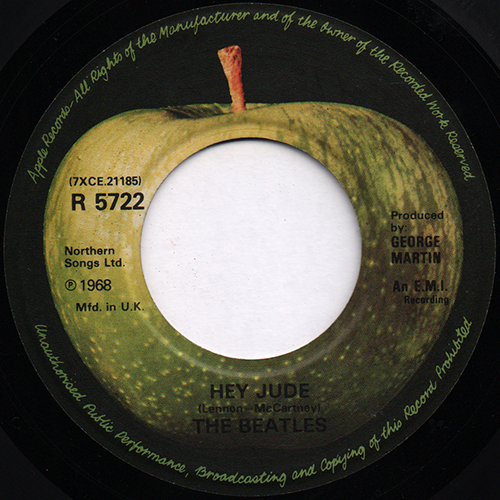 |
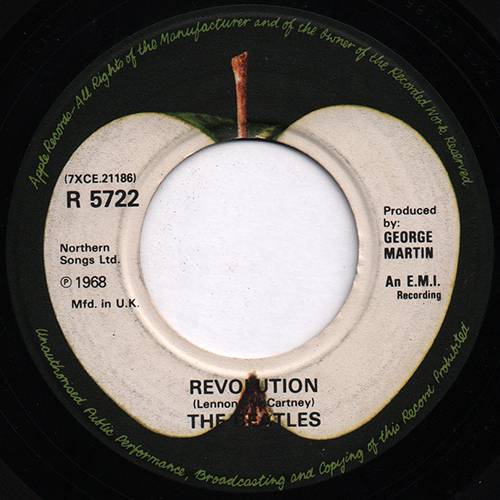 |
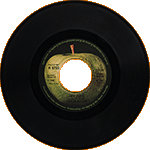 |
|
| LABEL CLOSE UP | |||||
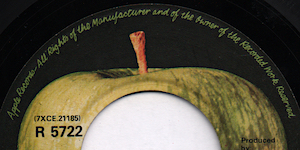 |
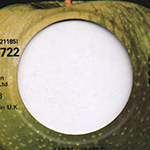 |
Dark green label with an image of
an apple on side 1 and sliced apple on side 2. Remove the central remark "SOLD IN UK..." The phrase "Apple Records - All Rights of the Manufacturer and of the Owner of the Recorded work Reserved." was printed at the perimeter. Full size center hole for jukeboxes. |
|||
| LABEL CLOSE UP | |||||
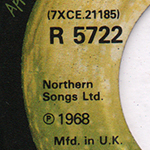 |
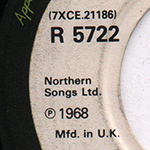 |
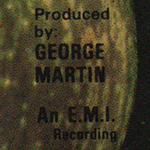 |
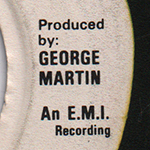 |
Light green apple label. "(P) 1970" statement was printed on the label. "An E.M.I. Recording" credit and "Produced by: GEORGE MARTIN" were printed. |
|
| LABEL CLOSE UP | |||||
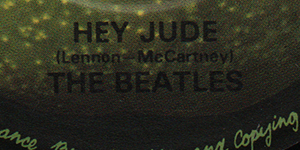 |
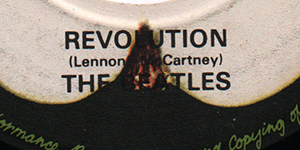 |
Different typeface: broad type font. | |||
| LABEL CLOSE UP | |||||
 |
 |
Matrix numbers: Side 1: 7XCE.21185-2 Side 2: 7XCE.21186-2 |
|||
|
OTHER ITEM
|
|||||
| - | |||||
|
CATALOG NUMBER
|
R 5722 | ||||
|
LABEL
|
Light Green Apple | ||||
|
MIX
|
Mono | ||||
| MATRIX No. | SIDE 1 | 7XCE 21185 -2 HTM(hand writing)* | MOTHER
& STAMPER |
6 / 1 5 | |
| SIDE 2 | 7XCE 21186 -2 HTM(hand writing)* | 3 / 2 8 | |||
|
VINYL COLOR
|
BLACK | ||||
|
RECORD COMPANY'S
NAME
|
Apple Records + An E.M.I. Recording | ||||
|
CENTER
|
Full size center hole | ||||
|
CENTRAL REMARK
"SOLD IN U.K..." |
- | ||||
| RECORDING PUBLISHED CREDIT | With small copyright symbol (P). | ||||
|
PUBLISHER'S NAME
|
SIDE 1
|
Northern Songs Ltd. | |||
|
SIDE 2
|
Northern Songs Ltd. | ||||
|
PRODUCER
|
George Martin | ||||
|
COVER DESIGN/
PHOTO/
NOTES
|
Plane black Sleeve? (maybe) | ||||
|
COMMENTS
|
All of these Apple
singles were custom manufactured without centres by EMI
specifically for use in jukeboxes. The inside of
each hole is smooth confirming that a centre was never
present. There are two types of the jukeboxes issue of the "Hey Jude" single (maybe). Type-1: Dark green apple label and "narrow" catalog number printing on the label. Type-2: Light green apple label and "broad" catalog number printing on the label. (=this record) (*) Harry T. Moss Mastering engineer. Worked for EMI & Abbey Road Studios. Often identified by the initials "HTM" which may appear to look like "HrM" in the runouts. |
||||
